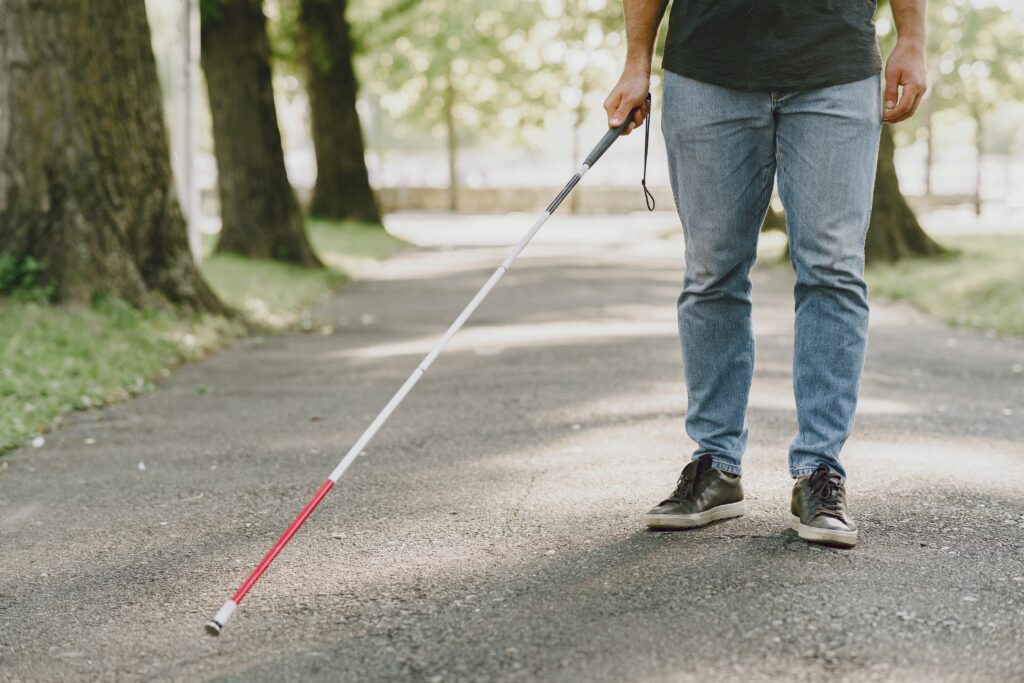Safer Alerts for Which Customers? Advocating for Accessible Pedestrian Alerts


By Claire Stanley and Becky Davidson
Introduction
America Walks helps secure streets for weak customers resembling pedestrians and folks with disabilities. A “Stroll” sign which ensures that no automobiles will drive throughout the crosswalk is a secure system, however most signalized intersections enable turning automobiles to cross the crosswalk throughout the “Stroll” part though they’re imagined to yield to pedestrians. “Lead Pedestrian Interval” (LPI) is meant to enhance security by activating the “Stroll” sign a couple of seconds earlier than a inexperienced mild permits vehicular motion. Nonetheless, as our pals and colleagues who advocate for blind and sight-impaired individuals level out, LPI should be mixed with Accessible (audio-enabled) Pedestrian Alerts.
Main Pedestrian Intervals (LPI) at signalized pedestrian crossings have gotten more and more widespread. They’re applauded for including an additional measure of security for pedestrians by giving them a couple of seconds to start out crossing the intersection earlier than the car visitors will get the sign to maneuver. Nice concept, proper? Sure, until you’re a blind, deaf-blind, or visually impaired pedestrian.
Right here’s Why:
People who find themselves blind can usually obtain orientation and mobility coaching supplied by specialists with particular credentials. They could obtain this coaching at school or as a part of rehabilitation. It supplies abilities wanted to navigate their setting safely, often utilizing a white cane to start with. Relating to crossing streets, the fundamental premise is that one listens to the visitors transferring in entrance of or beside you. When the visitors beside you goes ahead, that will point out that it’s secure to maneuver throughout the road. In right now’s pedestrian setting, issues have turn into extra difficult with turning lanes, stroll indicators, and now LPIs.
The progress of Accessible Pedestrian Alerts (APS)
Blind pedestrians have been advocating for Accessible Pedestrian Alerts (APS) for years, and a few progress is being made. The ADA requires that folks with disabilities have full and equal entry to their setting. That may be curb ramps, tactile warning strips, and, for the blind and deaf-blind pedestrian, data introduced audibly and tactilely that others obtain visually. This turns into extra vital when there’s an LPI.
With out receiving the audible cue that the interval has begun, the blind pedestrian taught and accustomed to ready for the visitors motion to determine to cross, will lose the benefit of these additional few seconds to cross the intersection. That may put the pedestrian in a really weak place. Drivers expect the pedestrian to cross with the LPI.
With pedestrian-vehicle crashes steadily rising, ALL pedestrians will need to have entry to ALL security measures meant to reverse this pattern. LPIs are a terrific concept so long as they’re absolutely accessible to ALL pedestrians.
Claire Stanley is a Public Coverage Analyst with Nationwide Incapacity Rights Community and Board Member with America Walks